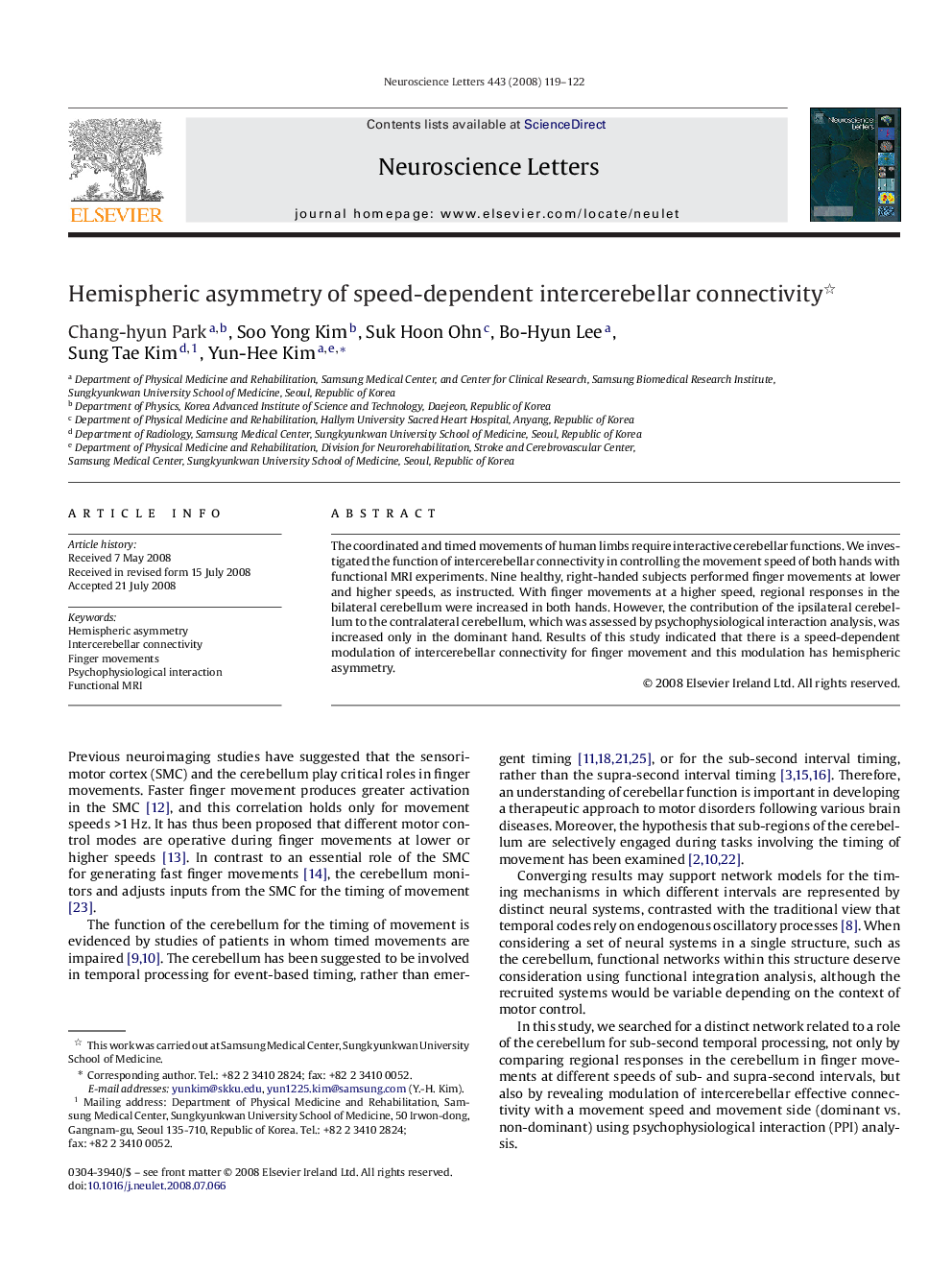| Article ID | Journal | Published Year | Pages | File Type |
|---|---|---|---|---|
| 4348097 | Neuroscience Letters | 2008 | 4 Pages |
The coordinated and timed movements of human limbs require interactive cerebellar functions. We investigated the function of intercerebellar connectivity in controlling the movement speed of both hands with functional MRI experiments. Nine healthy, right-handed subjects performed finger movements at lower and higher speeds, as instructed. With finger movements at a higher speed, regional responses in the bilateral cerebellum were increased in both hands. However, the contribution of the ipsilateral cerebellum to the contralateral cerebellum, which was assessed by psychophysiological interaction analysis, was increased only in the dominant hand. Results of this study indicated that there is a speed-dependent modulation of intercerebellar connectivity for finger movement and this modulation has hemispheric asymmetry.
